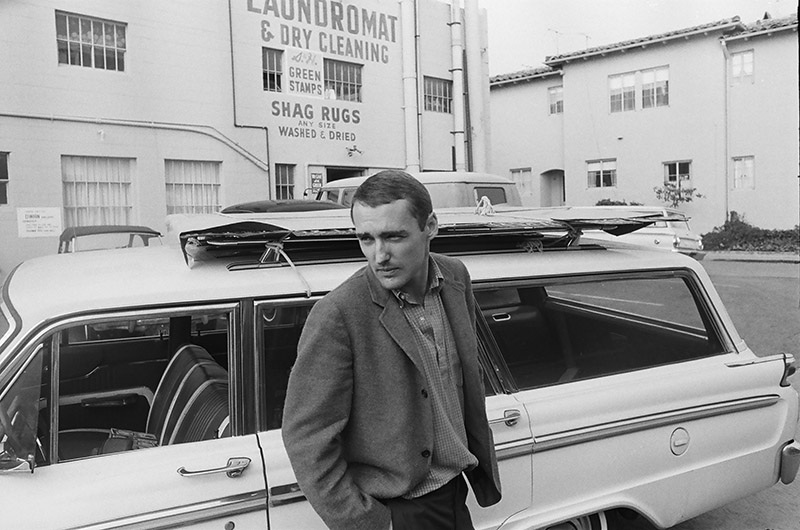ABOUT THE EXHIBITION
Dennis Hopper: The Lost Album
“I wanted to document something. I wanted to leave something that I thought would be a record of it, whether it was Martin Luther King, the hippies, or whether it was the artist.” —Dennis Hopper
One of the most acclaimed actors and directors of the 20th century, Dennis Hopper (1936–2010) was also a renowned artist, whose striking black-and-white photographs of American life in the 1960s embody the authenticity, grit, and intensity that characterized many of his films. This October, the New Britain Museum of American Art will present Dennis Hopper: The Lost Album, showcasing a landmark body of over 400 photographs by Hopper that were only recently rediscovered following his death in 2010, on loan from the Hopper Art Trust, Los Angeles. The NBMAA’s presentation represents the first time these works have been on view at an American museum in nearly 50 years.
These photographs, each slightly larger than the size of a postcard, reflect the people, places, and events that Hopper encountered in Los Angeles, Harlem, Selma, Tijuana and beyond, and record his life as well as the stories of others. Hopper’s vibrant social circle is captured in intimate and compelling portraits of artistic luminaries, such as Andy Warhol, Ed Ruscha, and Robert Rauschenberg; leading actors Jane Fonda, Paul Newman, and John Wayne; and legendary musicians James Brown, Cher, and Jefferson Airplane.
Hopper also documented some of the most defining social, political, and cultural events of the 1960s, including televised footage of John F. Kennedy’s funeral in 1963 and a 1965 lunar expedition. That same year, Hopper took stirring images of Martin Luther King Jr., whom he followed during the Selma-to-Montgomery, Alabama civil rights marches.
Hopper’s photography from the 1960s provides a view into a turbulent and yet hopeful decade—a time, according to Hopper’s daughter, Marin, “that needed to be captured. [Hopper] knew he was documenting something really important to leave behind as his legacy.” Writer Howard Hampton described the Lost Album works as “virtual stills from the greatest unmade film of the 1960s.” At the NBMAA, viewers can once again experience these iconic images within the context of a still ever-changing America.
Sponsors:
Dennis Hopper: The Lost Album is made possible by the generosity of the David T. Langrock Foundation.
Additional support is made possible by the Special Exhibition Fund donors, including John N. Howard, Sylvia Bonney, Anita Arcuni Ferrante and Anthony Ferrante, Marian and Russell Burke, and The Aeroflex Foundation. We also gratefully acknowledge the funding of Irene and Charles J. Hamm, Kelly and Jonathan Jarvis, Neal B. Freuden and Andrea Levy, Carolyn and Elliot Joseph, and Donna and Sam Stout. Works in The Lost Album are on loan from The Hopper Art Trust, Los Angeles.
